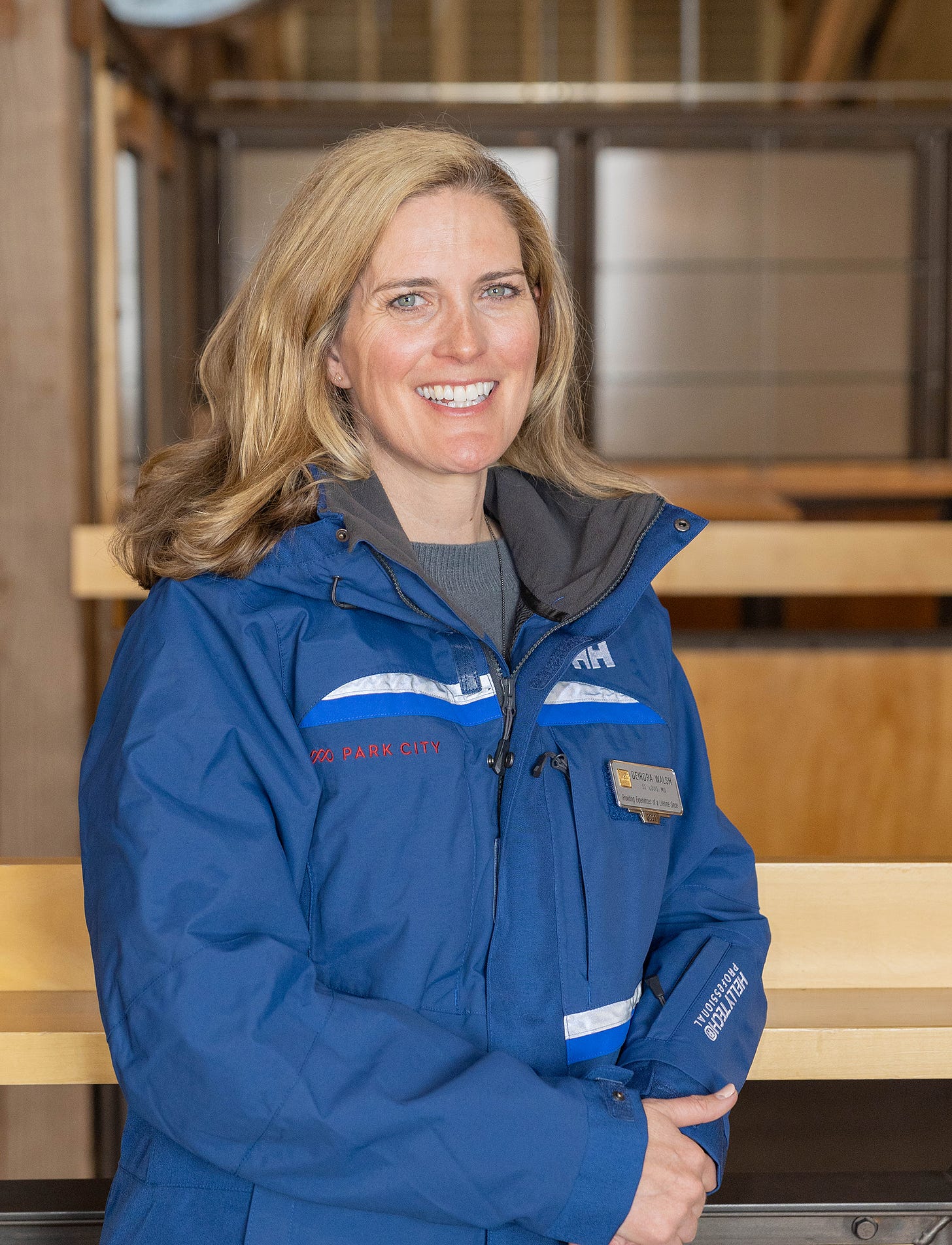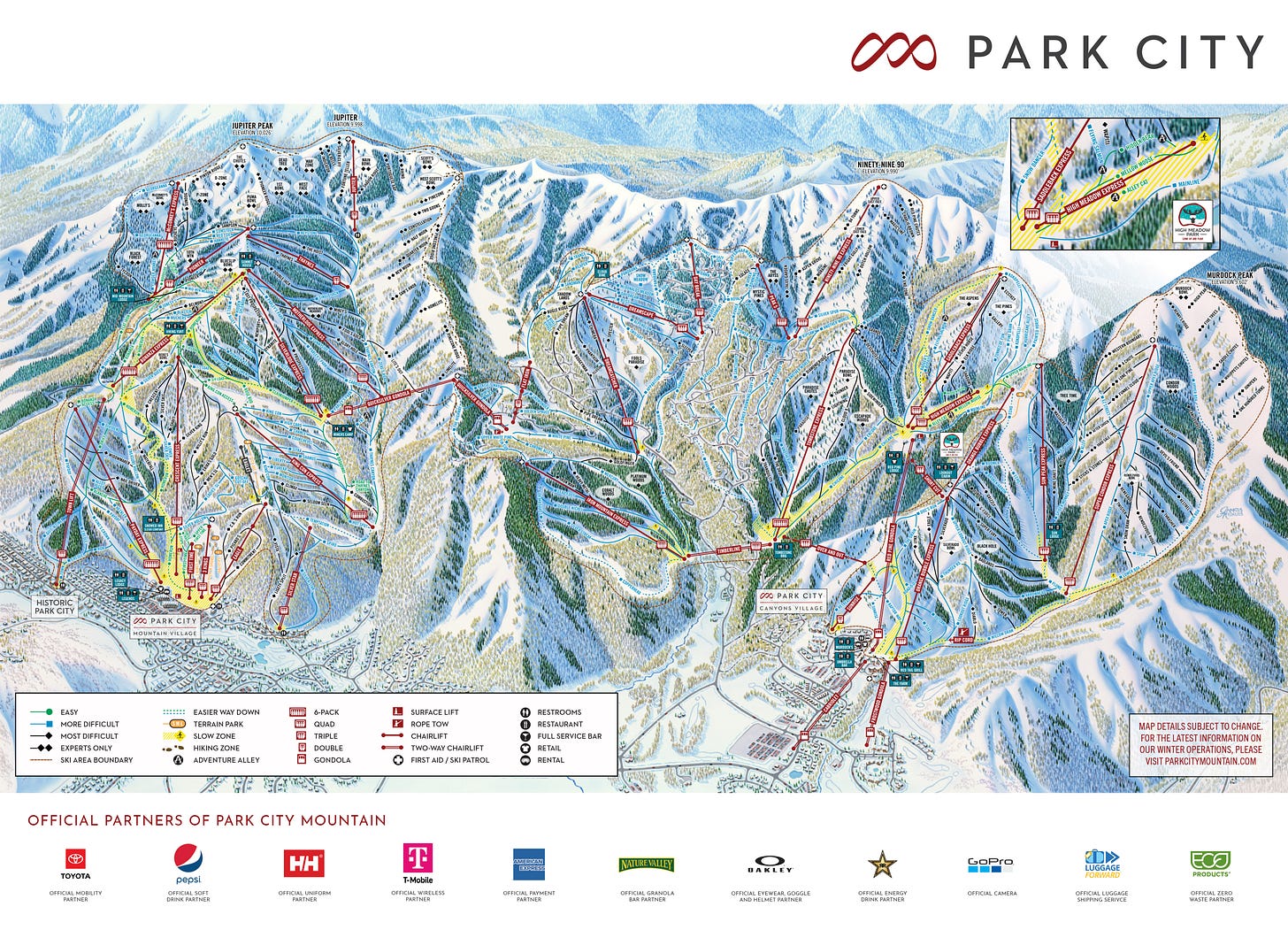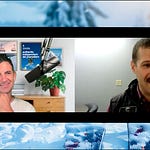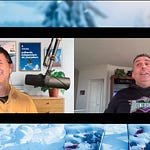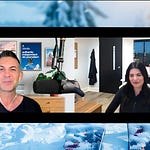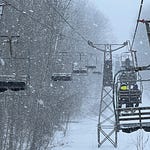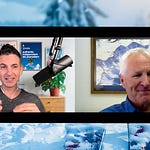Who
Deirdra Walsh, Vice President and Chief Operating Officer of Park City, Utah
Recorded on
October 18, 2023
About Park City
Click here for a mountain stats overview
Owned by: Vail Resorts
Located in: Park City, Utah
Year founded: 1963
Pass affiliations:
Epic Pass: unlimited
Epic Local Pass: unlimited with blackouts
Tahoe Local: five days combined with Vail, Beaver Creek, Breckenridge, Crested Butte, Keystone
Epic Day Pass: access with All Resorts tier
Closest neighboring ski areas: Deer Valley (:04), Utah Olympic Park (:09), Woodward Park City (:11), Snowbird (:50), Alta (:55), Solitude (1:00), Brighton (1:08) – travel times vary massively pending weather, traffic, and time of year
Base elevation: 6,800 feet
Summit elevation: 9,998 feet at the top of Jupiter (can hike to 10,026 on Jupiter Peak)
Vertical drop: 3,226 feet
Skiable Acres: 7,300 acres
Average annual snowfall: 355 inches
Trail count: 330+ (50% advanced, 42% intermediate, 8% beginner)
Lift count: 41 (2 eight-passenger gondolas, 1 pulse gondola, 1 cabriolet, 6 high-speed six-packs, 10 high-speed quads, 5 fixed-grip quads, 7 triples, 4 doubles, 3 carpets, 2 ropetows – view Lift Blog’s inventory of Park City’s lift fleet)
View historic Park City trailmaps on skimap.org.
Why I interviewed her
An unfortunate requirement of this job is concocting differentiated verbiage to describe a snowy hill equipped with chairlifts. Most often, I revert to the three standbys: ski area, mountain, and resort/ski resort. I use them interchangeably, as one may use couch/sofa or dinner/supper (for several decades, I thought oven/stove to be a similar pairing; imagine my surprise to discover that these described two separate parts of one familiar machine). But that is problematic, of course, because while every enterprise that I describe is some sort of ski area, only around half of them are anywhere near an actual mountain. And an even smaller percentage of those are resorts. Still, I swap the trio around like T-shirts in the world’s smallest wardrobe, hoping my readers value the absence of repetition more than they resent the mental gymnastics required to consider 210-vertical-foot Snow Snake, Michigan a “ski resort.”
But these equivalencies introduce a problem when I get to Park City. At 7,300 acres, Park City sprawls over 37 percent more terrain than Vail Mountain, Vail Resorts’ second-largest U.S. ski area, and the fourth-biggest in the nation overall. To call this a “ski area” seems inadequate, like describing an aircraft carrier as a “boat.” Even “mountain” feels insubstantial, as Park City’s forty-some-odd lifts shoots-and-ladder their way over at least a dozen separate summits. “Ski resort” comes closest to capturing the grandeur of the whole operation, but even that undersells the experience, given that the ski runs are directly knotted to the town below them – a town that is a ski town but is also so much more.
In recent years, “megaresort” has settled into the ski lexicon, usually as a pejorative describing a thing to be avoided, a tourist magnet that has swapped its soul for a Disney-esque welcome mat. “Your estimated wait time to board the Ultimate Super Summit Interactive 4D 8K Turbo Gondola is [one hour and 45 minutes]”. The “megas,” freighted with the existential burden of Epic and Ikon flagships, carry just a bit too much cruise ship mass-escapism and Cheesecake Factory illusions of luxe to truly capture that remote that is at least half the point of skiing. Right?
Not really. Not any more than Times Square captures the essence of New York City or the security lines outside the ballpark distill the experience of consuming live sports. Yes, this is part of it, like the gondola lines winding back to the interstate are part of -day Park City. Those, along with the Epic Pass or the (up to) $299 lift ticket, are the cost of admission. But get through the gates, and a sprawling kingdom awaits.
I don’t know how many people ski Park City on a busy day. Let’s call it 20,000. The vast majority of them are going to spend the vast majority of their day lapping the groomers, which occupy a small fraction of Park City’s endless varied terrain. With its cascading hillocks, its limitless pitch-perfect glades, its lifts shooting every which way like hammered-together contraptions in some snowy realm of silver-minerstheir century-old buildings and conveyor belts rising still off the mountain – Park City delivers a singular ski experience. Call it a “mountain,” a “ski area,” a “ski resort,” or a “megaresort” – all are accurate but also inadequate. Park City, in the lexicon of American skiing, stands alone.
What we talked about
Park City’s deep 2022-23 winter; closing on May 1; skiing Missouri; Lake Tahoe; how America’s largest ski area runs as a logistical and cultural unit; living through the Powdr-to-Vail ownership transition; the awesome realization that Park City and Canyons were one; Vail’s deliberate culture of women’s empowerment; the history and purpose of those giant industrial structures dotting Park City ski area; how you can tour them; the novel relationship between the ski area and the town at its base; Park City’s Olympic legacy; thoughts on future potential Winter Olympic Games in Utah and at Park City; why a six-pack and an eight-pack chairlift scheduled for installation at Park City last year never happened; where those lifts went instead; whether those upgrades could ever happen; the incoming Sunrise Gondola; the logic of the Over And Out lift; Red Pine Gondola improvements; why the Jupiter double is unlikely to be upgraded anytime soon; Town Lift; reflecting on year one of paid parking; and the massive new employee housing development at Canyons.
Why I thought that now was a good time for this interview
If only The Storm had existed in 2014. Because wouldn’t that have been fun? Hostile takeovers are rare in skiing. You normally can’t give a ski area (sorry, a super-megaresort) away. Vail taking this one off Powdr’s lunch tray is kind of amazing, kind of sad, kind of disturbing, and kind scary. Like, did that really happen? It did, so onward we go.
Walsh, as it happened, worked at Park City at the time, though in a much different role, so we talked about what is was like to live through. But two other events shape our modern perception of Park City: he Olympics and The Lifts.
The Olympics, of course, came to Park City in 2002. On this podcast a few weeks back, Snowbird General Manager outlined the dramatic changes the Games wrought. Suddenly, everyone on the planet realized that a half dozen ski resorts that averaged between 300 and 500 inches of snow per winter were lined up 45 minutes from a major international airport on good roads. And they were like, “Wait that’s real?” And they all starting coming – annual Utah skier visits have more than doubled since the Olympics, from around 3 million in 200-02 to more than 7 million in last year’s amazing . Which is cool. But the Olympics are (probably) coming back to Salt Lake, in 2030 or 2034, and Park City will likely be a part of them again.
The Lifts refers to this story that I covered last October:
Last September, Vail Resorts announced what was likely the largest set of single-season lift upgrades in the history of the world: $315-plus million on 19 lifts (later increased to 21 lifts) across 14 ski areas. Two of those lifts would land in Park City: a D-line eight-pack would replace the Silverlode six, and a six-pack would replace the Eagle and Eaglet triples. Two more lifts in a town with 62 of them (Park City sits right next door to Deer Valley). Surely this would be another routine project for the world’s largest ski area operator.
It wasn’t. In June, four local residents – Clive Bush, Angela Moschetta, Deborah Rentfrow, and Mark Stemler – successfully appealed the Park City Planning Commission’s previous approval of the lift projects.
“The upgrades were appealed on the basis that the proposed eight-place and six-place chairs were not consistent with the 1998 development agreement that governs the resort,” SAM wrote at the time. “The planning commission also cited the need for a more thorough review of the resort’s comfortable carrying capacity calculations and parking mitigation plan, finding PCM’s proposed paid parking plan at the Mountain Village insufficient.”
So instead of rising on the mountain, the lifts spent the summer, in pieces, in the parking lot. Vail admitted defeat, at least temporarily. “We are considering our options and next steps based on today's disappointing decision—but one thing is clear—we will not be able to move forward with these two lift upgrades for the 22-23 winter season,” Park City Mountain Resort Vice President and Chief Operating Officer Deirdra Walsh said in response to the decision.
One of the options Vail apparently considered was trucking the lifts to friendlier locales. Last Wednesday, as part of its year-end earnings release, Vail announced that the two lifts would be moved to Whistler and installed in time for the 2023-24 ski season. The eight-pack will replace the 1,129-vertical-foot Fitzsimmons high-speed quad on Whistler, giving the mountain 18 seats (!) out of the village (the lift runs alongside the 10-passenger Whistler Village Gondola). The six-pack will replace the Jersey Cream high-speed quad on Blackcomb, a midmountain lift with a 1,230-foot vertical rise. These will join the new Big Red six-pack and 10-passenger Creekside Gondola going in this summer on the Whistler side, giving the largest ski area on the continent four new lifts in two years. …
Meanwhile, Park City skiers will have to continue riding Silverlode, a sixer dating to 1996, and Eagle, a 1993 Garaventa CTEC triple (the Eaglet lift, unfortunately, is already gone). The vintage of the remaining lifts don’t sound particularly creaky, but both were built for a different, pre-Epic Pass Park City, and one that wasn’t connected via the Quicksilver Gondola to the Canyons side of the resort. Vail targeted these choke points to improve the mountain’s flow. But skiers are stuck with them indefinitely.
On paper, Vail remains “committed to resolving our permit to upgrade the Eagle and Silverlode lifts in Park City.” I don’t doubt that. But I wonder if the four individuals who chose to choke up this whole process understand the scale of what they just destroyed. Those two lifts, combined, probably cost somewhere around $50 million. Minimum. Maybe the resort will try again. Maybe it won’t. Surely Vail can find a lot of places to spend its money with far less friction.
All of which I thought was rather hilarious, for a number of reasons. First, stopping an enormous project on procedural grounds for nebulous reasons is the most U.S. American thing ever. Second, the more these sorts of over-the-top stall tactics are wielded for petty purposes (ski areas need to be able to upgrade chairlifts), the more likely we are to lose them, as politicians who never stop bragging about how “business-friendly” Utah is look to streamline these pesky checks and balances. Third, Vail unapologetically yanking those things out of the parking lot and hauling them up to BC was the company’s brashest move since it punched Powdr in the face and took its resort. It was harsh but necessary, a signal that the world keeps moving around the sun even when a small group of nitwits want it to stop on its axis.
Questions I wish I’d asked
On Scott’s Bowl access
I wanted to ask Walsh about the strange fact that Scott’s Bowl and West Scott’s Bowl – two high-alpine sections off Jupiter, suddenly closed in 2018 and stayed shut for four years. This story from the Park Record tells it well enough:
Park City Mountain Resort on Tuesday said a high-altitude swath of terrain has reopened more than three years after a closure caused by the inability of the resort and the landowner to reach a lease agreement. …
PCMR in December of 2018 indefinitely closed the terrain. The closure also included terrain located between Scott’s Bowl and Constellation, a nearby ski run. The resort at the time of the closure said the landowner opted not to renew a lease. There had been an agreement in place for longer than 14 years, PCMR said at the time.
A firm called Silver King Mining Company, with origins dating to Park City’s silver-mining era, owns the land. The lease and renewals had been struck between the Gallivan family-controlled Silver King Mining Company and Powdr Corp., the former owner of PCMR. A representative of Silver King Mining Company in late 2018 indicated the firm traditionally accepted lift passes as compensation for the use of the land.
The lease went to Vail Resorts when it acquired PCMR. The two sides negotiated a one-year extension but were unable at the time to reach a long-term agreement, the Silver King Mining Company side said in late 2018.
Land ownership, particularly in the west, can be a wild patchwork. The majority of large western ski areas sit on National Forest Service land, but Park City (and neighboring Deer Valley), do not. While this grants them some developmental advantages over their neighbors in the Cottonwoods, who sit mostly or entirely on public land, it also means that sprawling Park City has more landlords than it would probably like.
On Park City Epic Pass access
This is the first Vail Resorts interview in a while where I haven’t asked the question about Epic Pass access. I don’t have a high-minded reason for that – I simply ran out of time.
On the strange aversion to safety bars among Western U.S. skiers
When you ski in Europe or, to a lesser-extent, the Northeastern U.S., skiers lower the chairlift safety bar reflexively, and typically before the carrier has exited the loading terminal. While I found this jarring when I first moved to New York from the Midwest – where safety bars remain rare – I quickly adapted, and now find it disconcerting to ride a chair without one.
This whole dynamic is flipped in the West, where a sort of tough-guy bravado prevails, and skiers tend to ride with the safety bar aloft as a matter of stubborn pride. Many seem shocked, even offended, when I announce that I’m lowering it. Perhaps they are afraid their friends will see them riding with a lame tourist. It’s all a bit tedious and stupid.
Vail Resorts, however, mandates that all employees lower the safety bar when in uniform. That doesn’t mean they always do it. This past January, a Park City ski patroller died when a tree fell on the Short Cut liftline, flinging him into a snowbank, where he suffocated. Utah Occupational Safety and Health (UOSH) fined the resort a laughably inadequate sum of $2,500 for failing to clear potential hazards around the lift. UOSH’s report did not indicate whether the patroller, 29-year-old Christian Helger, had lowered his safety bar, and experts who spoke to Fox 13 in Salt Lake City said that, “with that type of hit from the weight of that type of a tree with that much snow on it, I don’t know that the safety bar would have prevented this incident.”
Fair enough. But a man is dead, and understanding the exact circumstances surrounding his death may help prevent another in the future. This is why airplane travel is so safe – regulators consider every factor of every tragedy to engineer similar failures out of future flights. We ought to be doing the same with chairlifts.
Chairlifts are, on the whole, very safe to ride. But accidents, when they do happen, can be catastrophic. Miroslava “Mirka” Lewis, a former Stevens Pass employee, recently sued Vail Resorts after a fall from one of Stevens Pass’ antique Riblet chairs in January of 2022 left her permanently disabled.
It is unclear which lift Lewis was riding, but two centerpole Riblets remained at the resort last January: Kehr’s and Seventh Heaven. Kehr’s has since been removed. Vail Resorts, as a general policy, retrofits all of its chairlifts with safety bars, but the chairs’ early-1960s recessed centerpole design is impossible to retrofit. So the lifts remain in their vintage state. It’s a bit like buying a ’57 Chevy – damn, does that thing look sweet, but if you drive it into a tree, you’re kinda screwed without that seatbelt.
Vail Resorts, by retrofitting its chairlifts and mandating employee use, has done more than probably any other entity to encourage safety bar use on chairlifts. But the industry, as a whole, could do more. In the east, safety bar use has been normalized by aggressive enforcement from lift crews and ski patrol and, in some cases (Vermont, Massachusetts, and New York), state laws mandating their use. Yet, across the West and the Midwest, hundreds of chairlifts still lack safety bars, let alone enforcement. That, in turn, discourages normalization of their use, and contributes to the blasé attitude among western skiers, many of whom view the contraptions as extraneous.
Technology can eventually resolve the issue for us – the new Burns high-speed quad at Deer Valley and the new Camelot six-pack at The Highlands in Michigan both drop the bar automatically, and raise it just before unload. But that’s two chairlifts, at two very high-end resorts, out of 2,400 or so spinning in America. That technology is too expensive to apply at scale, and will be for the foreseeable future.
So what to do? I think it starts with dismantling the tough-guy resistance. There are echoes here of the shift to widespread helmet use. Twenty years ago, almost no one, including me, wore helmets when skiing. I held out for a particularly long time – until 2016. But wearing them is the norm now, even among Western Bro Brahs. As the leader of a major Vail ski area who has watched the resort evolve first-hand, I think Walsh would have some valuable insight here, but we just didn’t have the time to get into it.
What I got wrong
I noted that Nadia Guerriero, who appeared on this podcast last year as the VP/COO of Beaver Creek, had “transitioned to a regional leadership role.” That role is senior vice president and chief operating officer of Vail Resorts’ Rockies Region.
Why you should ski Park City
Park City is a version of something that America needs a lot more of: a walkable community integrated with the ski area above it in a meaningful and seamless way. In Europe, this is the norm. In U.S. America, the exception. Only a few towns give you that experience: Telluride, Aspen, Red River. Park City is worth a visit for that experience alone – of sliding to the street, clicking out of your skis, and walking to the bar. It’s novel and unexpected here in the land of King Car, but it feels very natural and right.
The skiing, of course, is outstanding. There’s less chest-thumping here than up in the Cottonwoods – less snow, too – but still plenty of steep stuff, plenty of glades, plenty of tucked-away spots where you look around and wonder where everyone went. Zip around off McConkey’s or Jupiter or Tombstone or Ninety-Nine 90 or Super Condor and you’ll find it. This is not Snowbird-off-the-Cirque stuff, but it’s pretty good.
But what Park City really is, at its core, is one of the world’s great intermediate ski kingdoms. I’m talking here about King Con and Silverlode, the amazing jumble of blues skier’s right off Tombstone, Saddleback and Dreamscape and Iron Mountain. You can ride express lifts pretty much everywhere as you skip around the low-angle glory. The mountain does not shoot skyward with the drama of Jackson or Palisades or Snowbird. It rises and falls, rolls on forever, gifting you, off each summit, another peak to ride to.
Before Vail bought it and stapled the resort together with the Canyons, no one talked about Park City in such epic – no pun intended – terms. It was just another of dozens of very good western ski areas. But that combination created something vast and otherworldly, six-and-a-half miles end-to-end, a scale that cannot be appreciated in any way other than to go ski it.
Podcast Notes
On Vail’s target opening and closing dates
In previous seasons, Vail Resorts would release target opening and closing dates for all of its ski areas. Perhaps traumatized by short seasons, particularly in the Midwest, the company released only target opening dates, and only for its largest ski areas, for 2023:

On Hidden Valley, Missouri
Walsh’s first ski experience was at Hidden Valley, a 320-footer just west of St. Louis. It’s one of just two ski areas in Missouri. Vail happened to acquire this little guy in the 2019 Peak Resorts acquisition. Here’s a trailmap:

Not to be confused, of course, with Vail’s other Hidden Valley, which is stashed in Pennsylvania:
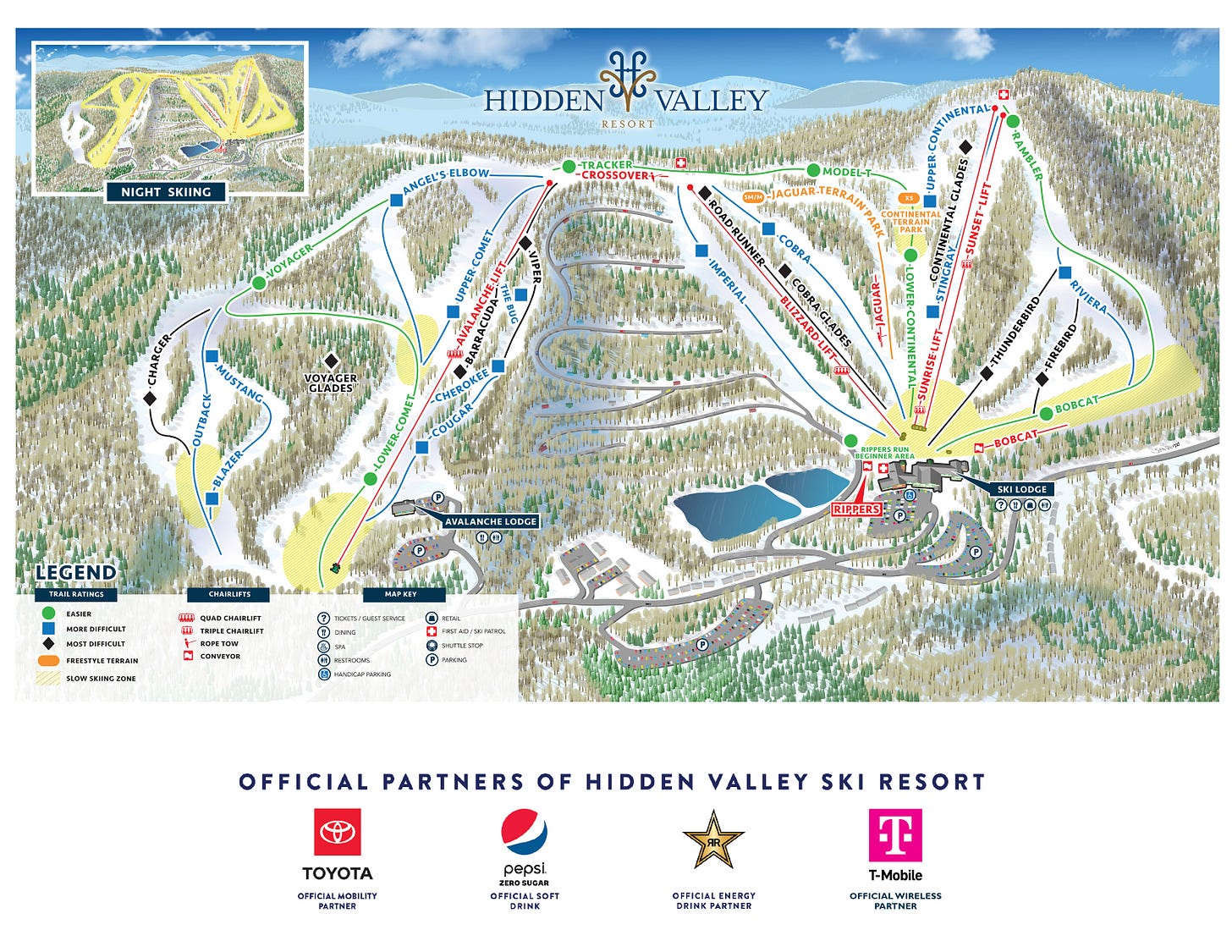
Rather than renaming one or the other of these, I am actually in favor of just massively confusing everything by renaming every mountain in the portfolio “Vail Mountain” followed by its zip code. Here’s how that would translate:
On the Vail-Powdr transition
I’ll reset this 2019 story from the Park Record that I initially shared in the article accompanying my podcast conversation with Mount Snow GM Brian Suhadolc in August, who also worked at Park City during Vail’s takeover from Powdr:
In some circles, though, the whispers had already started that something was afoot, and perhaps not right, at PCMR. Powdr Corp. for some unknown reason was negotiating a sale of its flagship resort, the most prevalent of the rumblings held. The CEO of Powdr Corp., John Cumming, late in 2011 had publicly stated there was not a deal involving PCMR under negotiation, telling Park City leaders during a Marsac Building appearance in December of that year the resort was “not for sale.” Later that evening, he told The Park Record the rumors “always amuse me.”
The reality was far more astonishing and something that would define the decade in Park City in a similar fashion as the Olympics did in the previous 10-year span and the population boom did in the 1990s.
The corporate infrastructure in the spring of 2011 had inadvertently failed to renew two leases on the land underlying most of the PCMR terrain, propelling the PCMR side and the landowner, a firm under the umbrella of Talisker Corp., into what were initially private negotiations and then into a dramatic lawsuit that unfolded in state court as the Park City community, the tourism industry and the North American ski industry watched in disbelief. As the decade ends, the turmoil that beset PCMR stands, in many ways, as the instigator of a changing Park City that has left so many Parkites uneasy about the city’s future as a true community.
The PCMR side launched the litigation in March of 2012, saying the future of the resort was at stake in the case. PCMR might be forced to close if it did not prevail, the president and general manager of the resort at the time said at the outset of the case. Talisker Land Holdings, LLC countered that the leases had expired, suddenly leaving doubts that Powdr Corp. would retain control of PCMR. …
Colorado-based Vail Resorts, one of Powdr Corp.’s industry rivals, would enter the case on the Talisker Land Holdings, LLC side in May of 2013 with the aim of wresting the disputed land from Powdr Corp. and coupling it with nearby Canyons Resort, which was branded a Vail Resorts property as part of a long-term lease and operations agreement reached at the same time of the Vail Resorts entry into the case. Vail Resorts was already an industry behemoth with its namesake property in the Rockies and other mountain resorts across North America. The addition of Canyons Resort would advance the Vail Resorts portfolio in one of North America’s key skiing states.
It was a deft maneuver orchestrated by the chairman and CEO of Vail Resorts, Rob Katz. The agreement was pegged at upward of $300 million in long-term debt. As part of the deal, Vail Resorts also seized control of the litigation on behalf of Talisker Land Holdings, LLC. …
The lawsuit itself unfolded with stunning developments followed by shocking ones over the course of two-plus years. In one stupefying moment, the Talisker Land Holdings, LLC attorneys discovered a crucial letter from the PCMR side regarding the leases had been backdated. In another such moment, PCMR outlined plans to essentially dismantle the resort infrastructure, possibly on an around-the-clock schedule, if it was ordered off the disputed land.
What was transpiring in the courtroom was inconceivable to the community. How could Powdr Corp., even inadvertently, not renew the leases on the ground that made up most of the skiing terrain at PCMR, many asked. Why couldn’t Powdr Corp. and Talisker Land Holdings, LLC just reach a new agreement, others wondered. And many became weary as businessmen and their attorneys took to the courtroom with the future of PCMR, critical to a broad swath of the local economy, at stake. The mood eventually shifted to exasperation as it appeared there was a chance PCMR would not open for a ski season if Talisker Land Holdings, LLC moved forward with an eviction against Powdr Corp. from the disputed terrain.
The lawsuit wore on with the Talisker Land Holdings, LLC-Vail Resorts side winning a series of key rulings from the 3rd District Court judge presiding over the case. Judge Ryan Harris in the summer of 2014 signed a de facto eviction notice against PCMR and ordered the sides into mediation. Powdr Corp., realizing there was little more that could be accomplished as it attempted to maintain control of PCMR, negotiated a $182.5 million sale of the resort to Vail Resorts that September.
Incredible.
On the Park City-Canyons connector gondola
We talked a bit about the Quicksilver Gondola, which, eight years after its construction, is taken for granted. But it’s an amazing machine, a 7,767-foot-long connector that fused Park City to the much-larger Canyons, creating the largest interconnected ski resort in the United States. The fact that such a major, transformative lift opened in 2015, just a year after Vail acquired Park City, and the ski area is now having trouble simply upgrading two older lifts, speaks to how dramatically sentiment around the resort has changed within town.
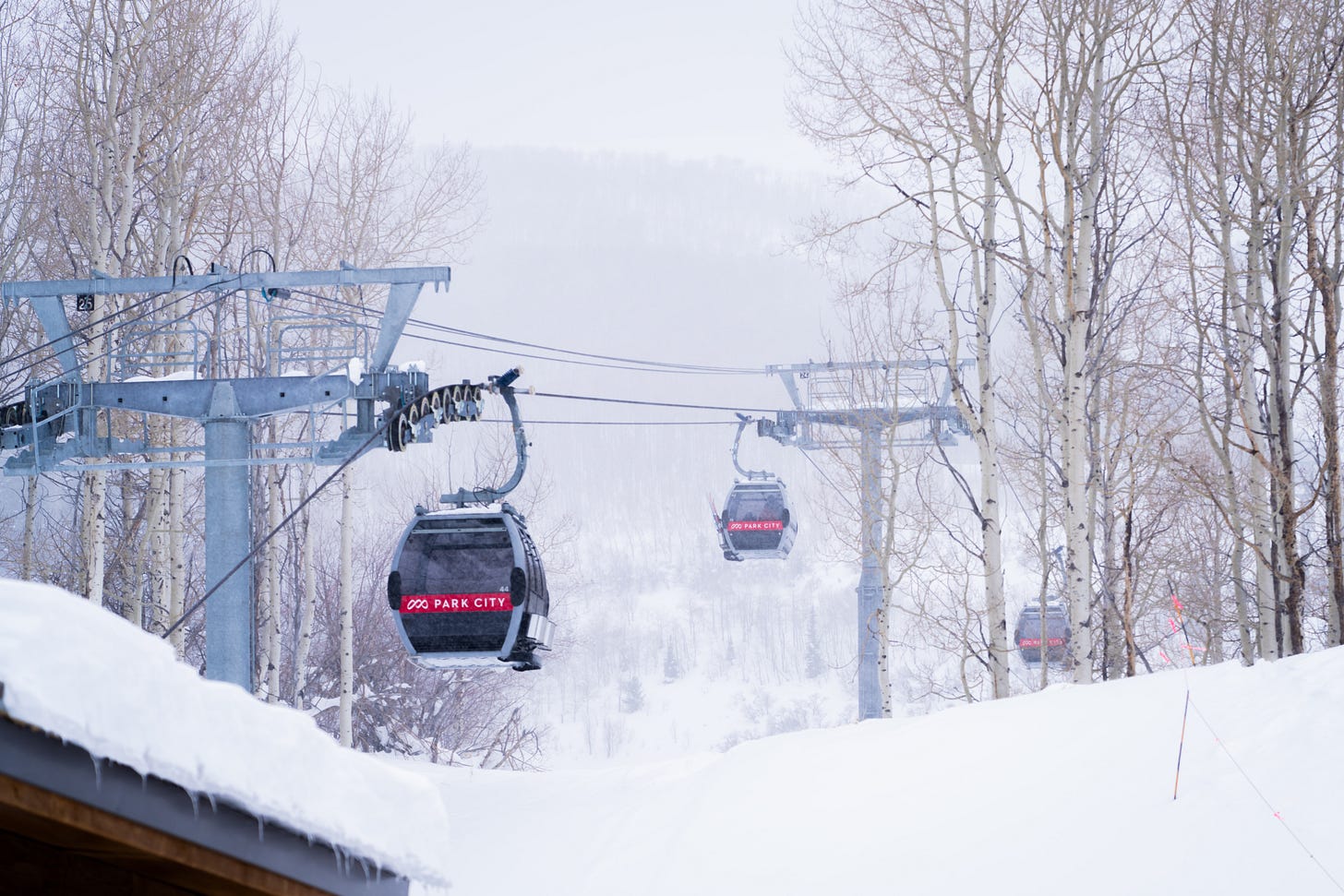
On Park City’s mining history
An amazing feature of skiing Park City is the gigantic warehouses, conveyor belts, and other industrial artifacts that dot the landscape. Visit Park City hosts free daily tours of these historic structures, which we discuss in the podcast. You can learn more here.



On the Friends of Ski Mountain Mining History
Walsh mentions an organization called “Friends of Ski Mountain Mining History.” This assumes the burden of restoring and maintaining all of these structures. From their website:
More than 300 mines once operated in Park City, with the last silver mine closing in 1982. Twenty historic mine structures still exist today, many can been seen while skiing, hiking or mountain biking on our mountain trails. Due to the ravages of time and our harsh winters, many of the mine structures are dilapidated and in critical need of repair. We are committed to preserving our rich mining legacy for future residents and visitors before we lose these historic structures forever.
Over the past seven years, our dedicated volunteers have completed stabilization of the King Con Counterweight, California Comstock Mill, Jupiter Ore Bin, Little Bell Ore Bin, two Silver King Water Tanks, the Silver Star Boiler Room and Coal Hopper, the Thaynes Conveyor and the King Con Ore Bin. Previous projects undertaken by our members include the Silver King Aerial Tramway Towers and two Silver King Water Tanks adjacent to the Silver Queen ski run. Our lecture with Clark Martinez, principal contractor on our projects and Jonathan Richards who is our structural engineer, will provide you insight as to how we saved these monuments to our mining era.
Preserving our mining heritage is expensive. Our next challenge is to save the Silver King Headframe located at the base of the Bonanza lift and Thaynes Headframe near the Thaynes lift at Park City Mountain Resort. These massive buildings and adjacent structures will take 6 years to stabilize with an expected cost of $3 million. We are embarking on a capital campaign to raise the funds required to save these iconic structures. You can learn more about our campaign here.
Here’s a cool but slow-paced video about it:
On the 2030/34 Winter Olympics
We talk a bit about the potential for Salt Lake City – and, by extension, host mountains Park City, Deer Valley, and Snowbasin – to host a future Olympic Games. While both 2030 and 2034 are possibilities, the latter increasingly looks likely. Per an October Deseret News article:
It looks like there’s no competition for Salt Lake City’s bid to host the 2034 Winter Games.
International Olympic Committee members voted Sunday to formally award both the 2030 and 2034 Winter Games together next year after being told Salt Lake City’s preference is for 2034 and the other three candidates still in the race are finalizing bids for 2030.
“I think it’s everything we could have hoped for,” said Fraser Bullock, president and CEO of the Salt Lake City-Utah Committee for the Games, describing the decision as “a tremendous step forward” now that Salt Lake City was identified as the only candidate for 2034.
Salt Lake City is bidding to host the more than $2.2 billion event in either 2030 or 2034, but has made it clear waiting until the later date is better financially, because that will avoid competition for domestic sponsors with the 2028 Summer Games in Los Angeles.
The next step for the bid that began more than a decade ago is a virtual presentation to the IOC’s Future Host Commission for the Winter Games during the week starting Nov. 19 that will include Gov. Spencer Cox and Salt Lake City Mayor Erin Mendenhall. IOC Executive Board members will decide when they meet from Nov. 30 through Dec. 1 which bids will advance to contract negotiations for 2030 and 2034, known as targeted dialogue under the new, less formal selection process. Their choices to host the 2030 and 2034 Winter Games will go to the full membership for a final ratification vote next year, likely in July just before the start of the 2024 Summer Games in Paris.
The Summer Olympics have evolved into a toxic expense that no one really wants. The Winter Games, however, still seem desirable, and I’ve yet to encounter any significant resistance from the Utah ski community, who have (not entirely but in significant pockets) kind of made resistence to everything their default posture.
The Storm publishes year-round, and guarantees 100 articles per year. This is article 96/100 in 2023, and number 482 since launching on Oct. 13, 2019. Want to send feedback? Reply to this email and I will answer (unless you sound insane, or, more likely, I just get busy). You can also email skiing@substack.com.



